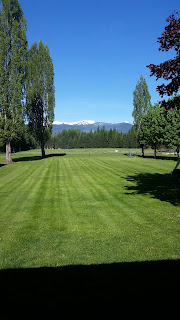Manure can tell you so much about a horse's health and stress levels in its consistency, texture, timing it is passed, etc.
But today I want to talk about something I've noticed over the years. Horses that come in for starting, re-educating, or refinement in their training are at various levels of exposure, confidence, and experience. They come from all over the country and are of many different breeds.
I believe socialization, freedom of movement, exposure to natural elements, and wildlife are important aspects of their education. They are kept in wooded area pastures at night and during the day are allowed to graze in herds in open grass fields.
I often joke I'm a grounds maintenance keeper and work with horses "on the side." I like to keep things neat and tidy and spend hours trying to keep up with the facility. So I notice things, like WHERE the horses poop.
Over the years I've realized there is a commensurate "evolution" in where horses decide to pass manure when they are out grazing during the day time in relation to their training.
In the beginning soon after they arrive, they poop wherever they may be grazing at the moment. As their mental availability and thoughtfulness starts to increase in our sessions together, they start to intentionally move closer to places where manure has been passed in the past. Then as they become more available and willing in "trying" and "searching" during their interactions with me, they start to consistently walk to a specific place to pass manure when grazing, in the same place, each day.
Even with me cleaning up manure daily, they will return to nearly the identical spot to relieve themselves, whether or not other horses have passed manure there recently.
I find the more mentally quiet and emotionally relaxed a horse is, the cleaner they are in where they decide to intentionally poop. If I hadn't noticed this consistently happening over the years with so many horses, I would have categorized the individual horse as a "messy" or clean horse.
But upon closer intentional observations, I have concluded that it, just as with all things horses do, is not an accident. It is yet another reflection of how their interaction with the human affects what their mental and emotional state is when they are on their own.






 re-start. Besides addressing his pain and physical issues, I also need to re-educate him on the human experience.
re-start. Besides addressing his pain and physical issues, I also need to re-educate him on the human experience.



